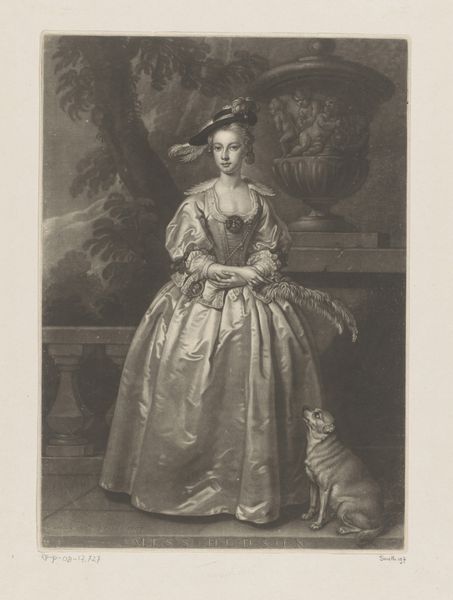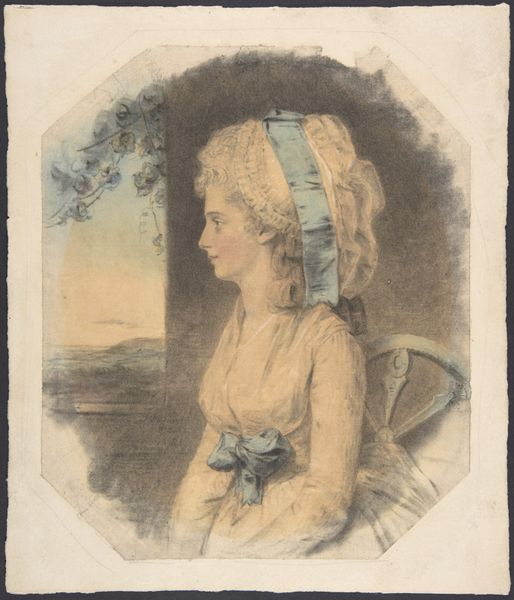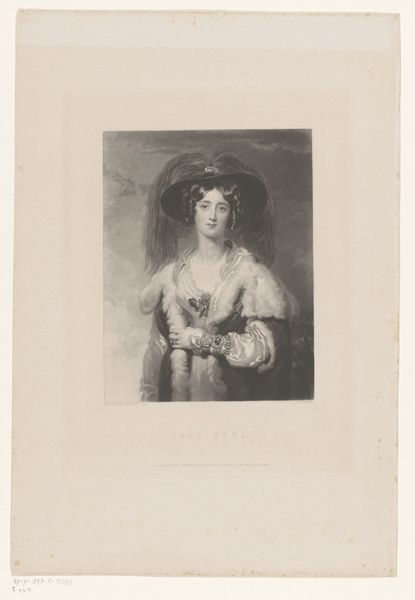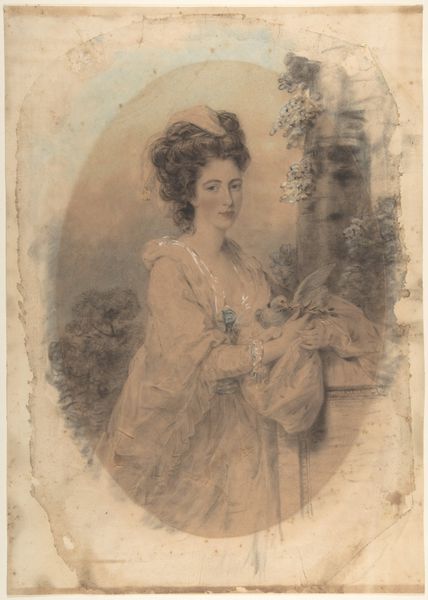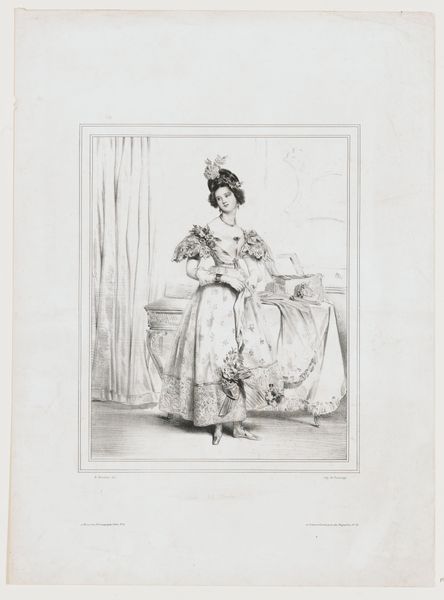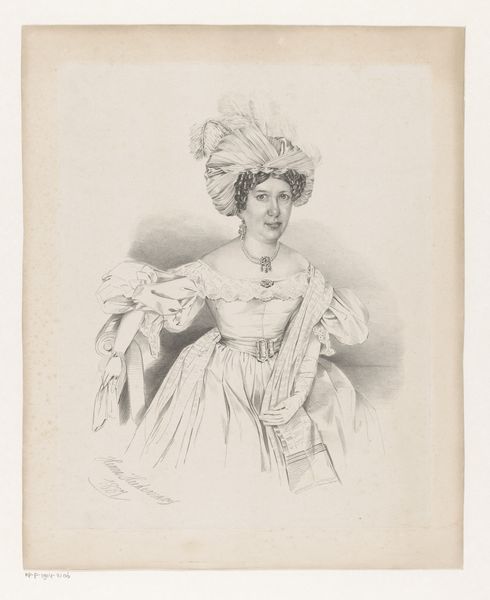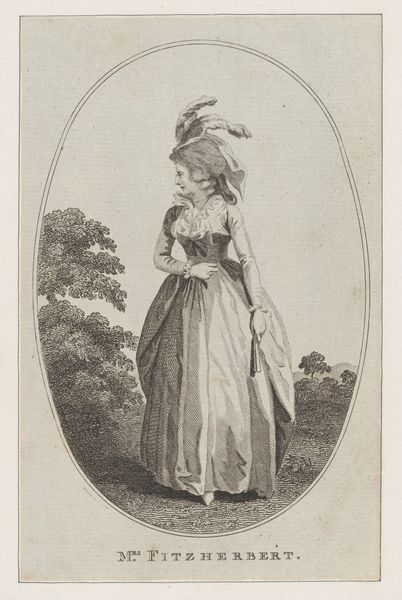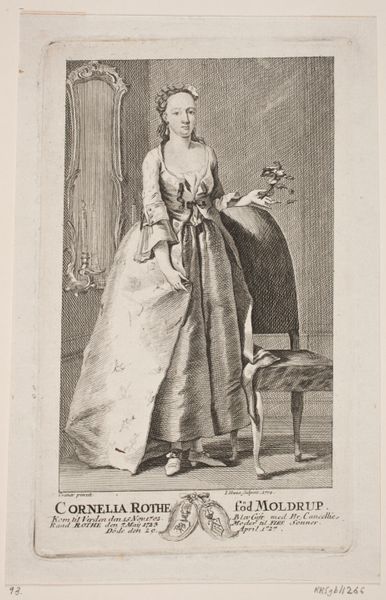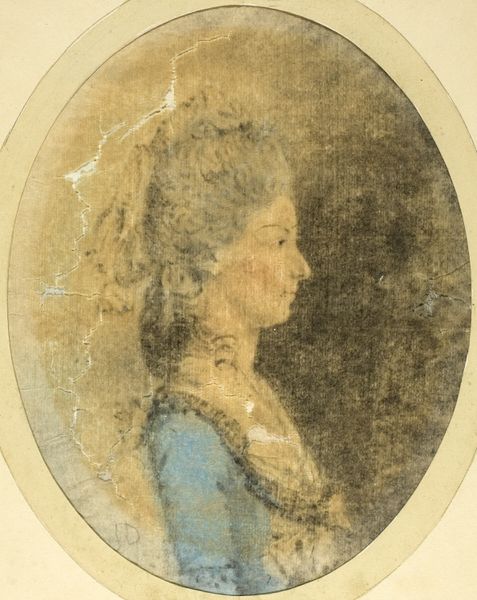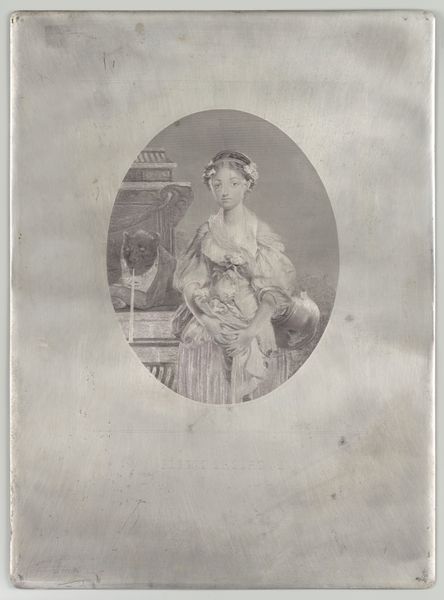
drawing, painting, print, watercolor
#
portrait
#
drawing
#
painting
# print
#
charcoal drawing
#
oil painting
#
watercolor
#
coloured pencil
#
rococo
Dimensions: Oval: 5 7/8 × 4 3/8 in. (15 × 11.1 cm)
Copyright: Public Domain
Curator: Before us hangs "Portrait of Marguerite Le Comte," rendered in watercolor and ink by Étienne de Lavallée-Poussin in 1764. What are your first thoughts? Editor: Well, it whispers of another era. There's a delicacy to it, like a half-remembered dream. She’s ethereally beautiful, caught between playful energy and composed formality, which are Rococo ideals of the era. There is the traditional closed-off aristocratic feeling mixed with lightness. Curator: Exactly! Poussin captures that Rococo spirit beautifully. Notice how the oval composition softens the formal portrait tradition. It emphasizes the grace and elegance considered quintessential at the time. The table is interesting; the positioning in the work looks odd to me, though. Editor: I read the table more symbolically: the domestic sphere. She’s at home, literally and figuratively grounded in the feminine world despite her elite status. And, in relation to aristocratic portraiture, her relative lack of jewels seems purposeful; rather the finery of her dress is most pronounced. Do you think Poussin tried to project simplicity as another aspect of her personality? Curator: It's a possibility. Remember, the French court was leaning towards the natural and simple toward the end of the Rococo period. A more straightforward reading, though, sees it reflecting a broader societal shift towards more "natural" depictions. Editor: I do like her direct gaze. There's an intelligence there, beyond mere beauty. Almost defiant, if you ask me. Are there other clues that defy that time? Curator: Well, her expression resists easy categorization, as do those of many women in art history. Perhaps the image invites us to see beyond the surface and into a soul... although projecting our own experiences might be inevitable when we try to bridge the centuries. It's also the magic, don’t you think? Editor: Oh, definitely. Perhaps it is not only Poussin, but also her expression that invites a look inward at the society he was living in. This work becomes an introspective experience for both artist and viewer! It really captures the complexity beneath all that lace. Thank you!
Comments
No comments
Be the first to comment and join the conversation on the ultimate creative platform.
